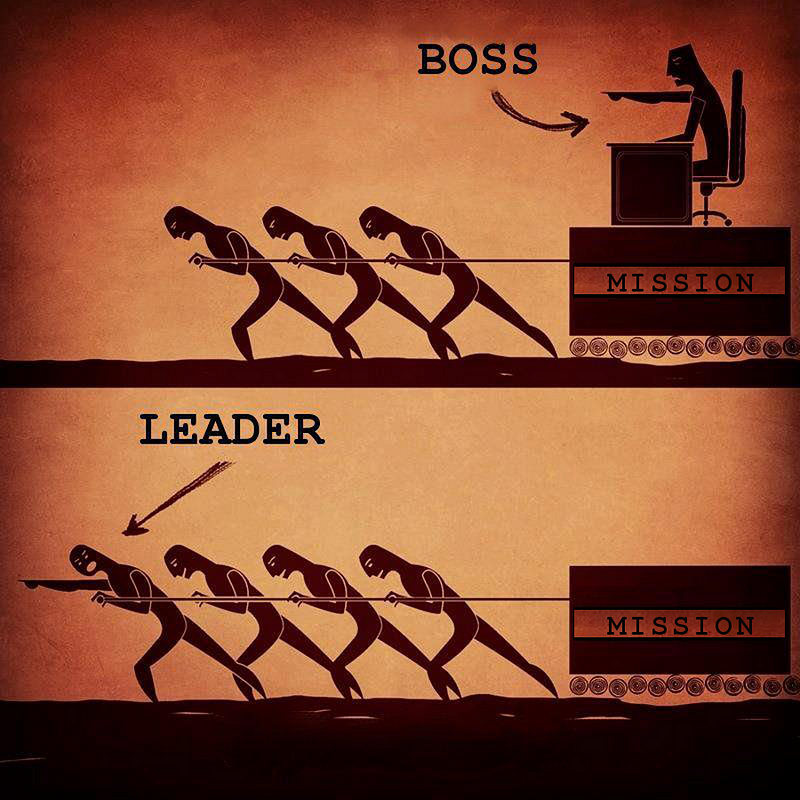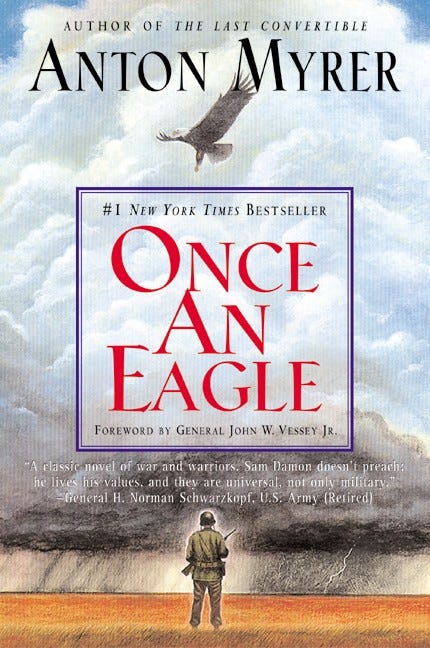The Three Streams of Leadership
Why ‘Charity vs. Selfishness’ should replace the ‘Management vs. Leadership’ dichotomy in our thinking about leaders.
The Defence of Saragosa (Agustina de Aragon)— David Wilkie, 1828.
https://medium.com/the-bridge/the-three-streams-of-leadership-d76c13d18538
“But it ain’t all buttons and charts, little albatross. You know what the first rule of flyin’ is? Love. You can know all the math in the ‘Verse, but take a boat in the air you don’t love, she’ll shake you off just as sure as the turning of the worlds. Love keeps her in the air when she oughta fall down, tells ya she’s hurtin’ ‘fore she keens. Makes her home.” — Captain Malcolm Reynolds, ‘Serenity.’
Major General Robert Scales, former commandant of the US Army War College, recently lamented his role in returning the novel Once an Eagle to prominence in the military.
“The book’s lasting attraction for soldiers is the personal and moral battle within its pages between true and false officership as embodied by Sam Damon, a former enlisted man and true soldier’s soldier and Courtney Massengale, a West Pointer who embodies all that is evil among the grasping and politically driven elite… For years the book became a bedside volume and often I would, like many in my generation who had seen insensitive staff REMFs in Vietnam, warn too-clever officers not to ‘act like a Massengale’… With reflection I think, in part as a result of the book, the Army today venerates Sam Damon too much and castigates Courtney Massengale to its detriment. Its pages might well have contributed to the conflation of two views of careerism between the good warrior versus the bad staff officer.”
Scales’ main point — staff officers might be service-oriented as easily as self-oriented, just as line officers might be self-oriented as easily as service-oriented — raises a larger point. We often confuse affiliation or complexion — one’s job or one’s personality — with the weightier matters of character and service.

One classic formulation of this confusion is ‘Manager vs. Leader.’ In any of a hundred stories, I recall friends describing some individual in a position of formal authority ‘a manager, not a leader,’ because of their tendency to treat their people like objects to be manipulated and controlled rather than comrades to be inspired and cared for. While I wholeheartedly ratify the substance of their critique, I would argue that the core issue — treating people as means rather than ends — is fundamentally a failure of character rather than style.
What I mean by this is I have seen a good number of excellent leaders whose command style was very quiet and technical, but genuinely loved their people, gave them the room and resources to flourish, and led their units very effectively. They generally got less credit than they should have, because their ability to build excellent organizational architectures and place the right people in the right places meant that their people, not themselves, took center stage.
Conversely, I have seen some number of people who were quite personable, generally well-liked, and often seen ‘out in front,’ but were at their core profoundly selfish and lazy. These individuals may have been seen as leaders for a time, but their troops would generally realize at some point that their leader was more interested in personal angles rather than their well-being. This generally occurred when a failure to do homework or due diligence in planning created some sort of catastrophe. The suave authority figure then either sweet-talked or blame-shifted their way out of the frag pattern, which fell on their subordinates. The worst of these were the Pied Pipers, who left time-bombs for their successors by spending down organizational capital to secure their own prosperity, and visited harm on their subordinates through neglect, yet were so well-liked that neither successor nor follower figured out that they had been done a disservice until years later.
Therefore, rather than reducing the equation to managers vs. leaders, I believe that we should reduce the equation to Charity vs. Selfishness…
Accordingly, I believe there are manager-leaders who led profoundly well because of their selflessness, and there are popular-leaders who led profoundly poorly because of their selfishness. Of course, there are popular-leaders who lead very well, and manager-leaders who lead very poorly, but the goodness and badness is similarly a function of selflessness vs. selfishness. Therefore, rather than reducing the equation to managers vs. leaders, I believe that we should reduce the equation to Charity (the willingness to put the interests of the mission and your subordinates above your own) vs. Selfishness (the choice to put ‘Me’ in front of the ‘Mission’ and the ‘Men.’)
However, this raises an interesting point — if popular-leaders and manager-leaders can both lead well and poorly, then we should consider different flavors of leadership, and how they can all express themselves in ripe and rotten forms. As the classic George Box quote goes, “all models are wrong, some models are useful.” While we have more than a few typologies of leadership, I propose one more incomplete and flawed model in hopes it might prove useful.
In short: three different streams of leadership — structural, relational, and imaginative — each produce distinctive cultural flavors, and a healthy unit exhibits a mix of all of them. A good leader will use their strengths in one stream to cover down on their weaknesses in the others, in the company of comrades, and in service to the mission and their people. A toxic leader corrupts these streams in pursuit of their own agenda, and each of the three has distinctive flavors of corruption. Therefore, we have three streams and two valences — selfless and selfish. We explore these presently:
Structural Leadership. This stream of leadership is about framing institutions and processes in such a way as to maximize the space for human flourishing. Executed well, this stream builds the organizational chart, areas of responsibility, and functional flows in order to create places for people, and then places people in positions best suited for them. We might imagine this stream as that of an architect, deliberate and precise in measuring and building, but present only in the background when the spaces are filled. Of course, these organizational edifices are in constant need of repair and remodeling, so perhaps a strong structural leader is equal parts architect, handyman, and janitor.
The noble form of [Structural Leadership] stream looks like delegation and mission command…
The relevant literature for this stream is institutional design and organizational theory — techniques and theories for how to manage time and resources free people to explore and grow into the spaces carved out for them. Similarly, the personal capital for this stream of leadership is discipline and time management, which provides the scarce resources to maintain the structure. The noble form of this stream looks like delegation and mission command, which is a quiet but very active form of leadership that requires both good personnel choices and the confidence of having properly framed a subordinates’ scope of responsibility.
 “The Creation of Adam” by Michaelangelo as an exemplar of Imago Dei (Wikimedia Commons)
“The Creation of Adam” by Michaelangelo as an exemplar of Imago Dei (Wikimedia Commons)
This stream of leadership is easily confused with pejorative ‘management,’ which reduces people to processes and math problems and attempts to solve them. But the difference here is about Charity vs. Pride — whether rooted in the Imago Dei or any other wellspring of human dignity, the uncorrupted stream of structural leadership sees these architectural skills as a way to build and protect a space for subordinates to find themselves together in the pursuit of the mission. The corrupted form uses the same skills to subjugate subordinates under reporting burdens, to set offices against each other in order to make them dependent on the authority figure, to monitor and control and micromanage. The difference, as in all of the streams, is in whether authority allows the leader to serve the mission and their people, or whether their leadership skills are turned toward controlling and manipulating subordinates.
Relational Leadership. The relational stream is about perfecting social interactions and building spaces of camaraderie, challenge, and comfort in order to bring out the best in subordinates. Employed with skill, relational leadership builds trust networks, reconciles conflict and synchronizes intent amongst team members. If the structural leader was an architect, the relational leader is a gardener, cultivating rich spaces for social interaction, feeding and weeding them in order to keep them productive and oriented toward the mission.
If the structural leader was an architect, the relational leader is a gardener…
This stream builds on social psychology and management theory, which provides tools for dealing with obstacles between people. It builds on the personal capital of relational quality time and likability. As with structural leadership, it has self-serving and selfless forms — the former involves manipulation, favoritism, intimidation, cults of personality, and the aforementioned Pied Piperism. The latter is about identifying deep strengths of subordinates and cultivating them through a mix of discipline, support, inspiration, forbearance, and high expectations.
Vision Leadership. This ‘leadership by imagination’ is about storytelling and kindling a vision of the possible beyond the problems of the present. This has both a conservative face, where cultural memory is built through lore and symbols, and a reforming face, where idealized pictures of the past create a dream of a better future, which enables the actions that might bring it to pass. (Consider Milton’s Paradise Lost and Paradise Regained.) We could picture this as a navigator, charting maps and looking to the skies for direction.
The uncorrupted form here creates identities and dreams that prepare followers for the demands of what is to come…
 The relevant literature for this stream is history (and occasionally science fiction,) as it provides a reservoir for the sorts of stories that can change things. The personal capital is the knowledge of these stories and the ability to inspire them in others — the T.E. Lawrence ‘Dreamers of the Day’ imagination. (Note that without this third form of leadership, we can’t explain why the trait of ‘half-mad’ pops up so often in the annals of great military leaders, when that trait would ordinarily be a liability on the structural and interpersonal fronts.) The uncorrupted form here creates identities and dreams that prepare followers for the demands of what is to come, whether emerging missions or cultural challenges. The corrupted, self-serving form is a cheap form of identity based in grievance, tribalism or superiority vis-à-vis a comrade.
The relevant literature for this stream is history (and occasionally science fiction,) as it provides a reservoir for the sorts of stories that can change things. The personal capital is the knowledge of these stories and the ability to inspire them in others — the T.E. Lawrence ‘Dreamers of the Day’ imagination. (Note that without this third form of leadership, we can’t explain why the trait of ‘half-mad’ pops up so often in the annals of great military leaders, when that trait would ordinarily be a liability on the structural and interpersonal fronts.) The uncorrupted form here creates identities and dreams that prepare followers for the demands of what is to come, whether emerging missions or cultural challenges. The corrupted, self-serving form is a cheap form of identity based in grievance, tribalism or superiority vis-à-vis a comrade.
While most individuals are gifted in only one or two streams of leadership, a well-led unit will benefit from all three streams, and those individuals must find the humility to realize they need others.
Simorgh (Conference of the Birds) — Bahram Alivandi
Moving Past our own Gifts. Rarely does someone have equal gifts in all three forms. So while most individuals are gifted in only one or two streams of leadership, a well-led unit will benefit from all three streams, and those individuals must find the humility to realize they need others. But this is itself good — we learn to transfer some of our strengths and partner with comrades to cover down on our weaknesses, and this draws us outside ourselves.
 The three forms can easily complement each other — the architect builds spaces for growth, the gardener cultivates those spaces, and the navigator plants seeds for the future. An excellent architect would be smart enough to hire a gardener and a navigator, the gardener attracts an architect to his or her circle of friends, and the navigator inspires others with better day-to-day skills than they have. The three corrupt forms also complement each other in their own way — the interpersonal manipulator sells a seductive vision, while they build architectures that place their people at each others’ throats. The micromanager finds likeminded appendages and recruits them with the promise of membership in an ‘inner ring.’ Like tends to attract like, whether for good or for ill.
The three forms can easily complement each other — the architect builds spaces for growth, the gardener cultivates those spaces, and the navigator plants seeds for the future. An excellent architect would be smart enough to hire a gardener and a navigator, the gardener attracts an architect to his or her circle of friends, and the navigator inspires others with better day-to-day skills than they have. The three corrupt forms also complement each other in their own way — the interpersonal manipulator sells a seductive vision, while they build architectures that place their people at each others’ throats. The micromanager finds likeminded appendages and recruits them with the promise of membership in an ‘inner ring.’ Like tends to attract like, whether for good or for ill.
The higher road calls us to seek out those strengths in others that complement our weakness, and offer our own strengths to cover their weakness.
And this brings us back to ‘Once an Eagle.’ The key is not whether one is a given flavor or another flavor, as those flavors do not cleanly reduce to love for troops or mission focus. The key is whether we love our troops enough to face a scary world outside of ourselves, where we must cover down on our weaknesses through admitting them in the company of comrades, in order to provide all the necessary flavors of leadership to our troops. If we do not, we stand at risk of reducing our units to a cult of personality built around our own strengths, and we then write stories to justify how our personal strengths are uniquely right and good.
The higher road calls us to seek out those strengths in others that complement our weakness, and offer our own strengths to cover their weakness. In short, the question was never about the primacy of line over staff, nor the primacy of leaders over managers, but always about the primacy of the mission and the men over me. And there are many flavors of leadership by which we might live that out.
Dave Blair is a U.S. Air Force officer and is a graduate of the United States Air Force Academy. He holds a PhD and a Masters degree from Georgetown, and a Masters in Public Policy from the Harvard Kennedy School. He proudly holds the great privilege of serving one-hundred-some of our nation’s finest aviators and warriors as an architect (and occasionally also serving them as a plumber and a janitor.) The views expressed in this article are the author’s alone, and do not reflect those of the U.S. Air Force, the Department of Defense, or the U.S. Government.
No comments:
Post a Comment